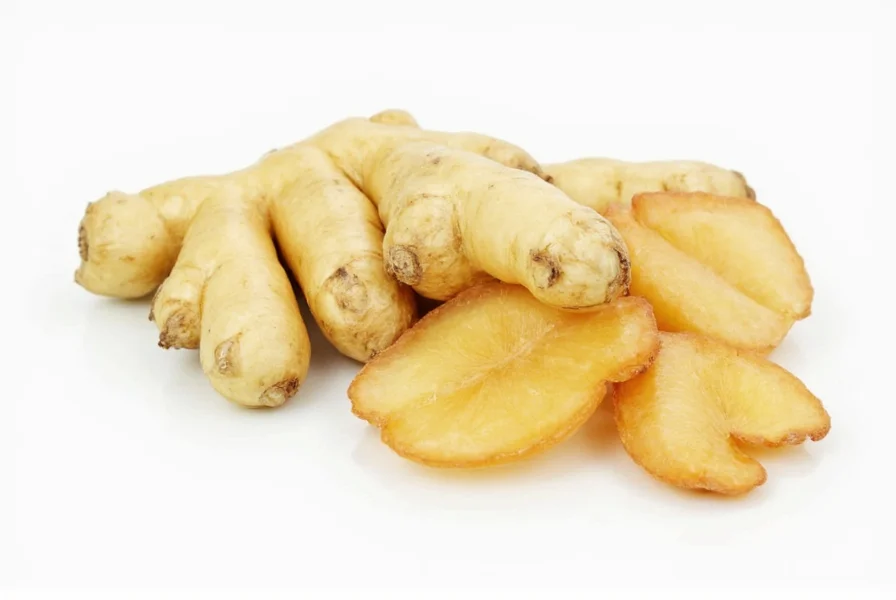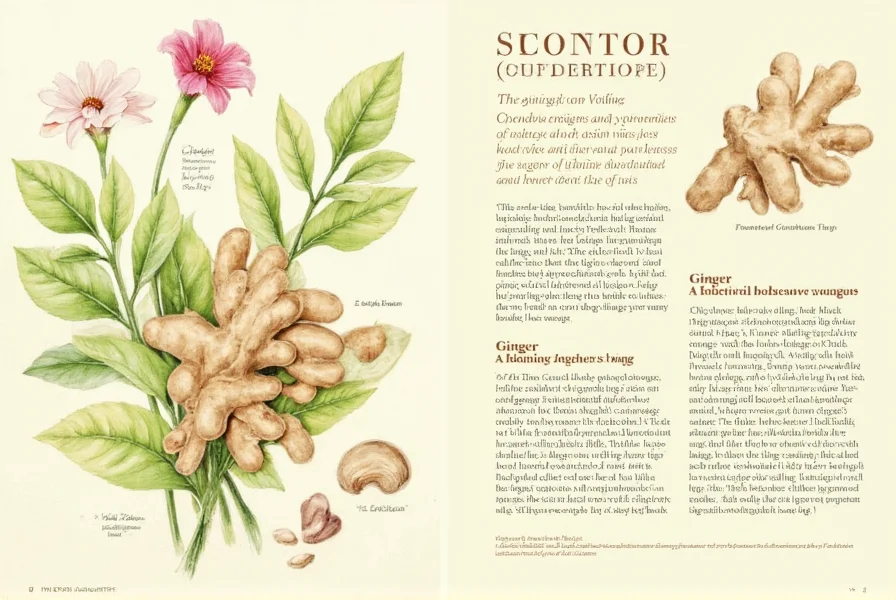Ginger definition encompasses both its botanical identity and culinary significance. This perennial herb belongs to the Zingiberaceae family, which also includes turmeric and cardamom. The part most commonly used is the rhizome, often mistakenly called 'ginger root,' though it's technically an underground stem.
Botanical Classification and Characteristics
Scientifically classified as Zingiber officinale, ginger is a tropical plant that grows 2-3 feet tall with narrow green leaves and yellow-green flowers. The rhizome features a thin brown skin with a fibrous texture and yellowish flesh containing aromatic essential oils that give ginger its characteristic pungency.

Historical Background and Global Spread
Originating in maritime Southeast Asia, ginger has been used for over 5,000 years in traditional medicine and cooking. Ancient Chinese and Indian medical texts document ginger definition and applications for treating digestive issues and inflammation. Arab traders introduced ginger to Europe during the first century AD, where it became so valuable it was priced equally with a sheep.
Culinary Applications Worldwide
Ginger's versatility explains its presence in nearly every global cuisine. In Asian cooking, fresh ginger definition includes its use in stir-fries, soups, and marinades. European traditions feature it in baked goods like gingerbread and seasonal beverages. Caribbean cuisine utilizes ginger in jerk seasonings, while Middle Eastern recipes incorporate it into spice blends like baharat.
| Form of Ginger | Common Uses | Flavor Profile |
|---|---|---|
| Fresh Ginger | Stir-fries, teas, marinades | Sharp, bright, citrusy |
| Dried Ginger Powder | Baking, spice blends | Warmer, more concentrated |
| Candied Ginger | Desserts, confections | Sweet with spicy kick |
| Ginger Juice | Cocktails, dressings | Clean, intense flavor |
Medicinal Properties and Health Benefits
Understanding ginger definition extends to its therapeutic applications. Modern research supports many traditional uses, particularly for:
- Nausea relief, including morning sickness and motion sickness
- Digestive aid that stimulates enzyme production
- Anti-inflammatory effects that may reduce muscle pain
- Antioxidant properties that combat oxidative stress
The active compounds responsible for ginger's pungency—gingerols and shogaols—also contribute to its medicinal properties. These compounds give ginger its distinctive spicy kick while providing potential health benefits that have been studied for conditions ranging from osteoarthritis to nausea management.
Nutritional Profile of Ginger
Per tablespoon (6g) of fresh ginger:
- Calories: 4
- Carbohydrates: 1g
- Fiber: 0.1g
- Vitamin C: 1% of daily value
- Magnesium: 1% of daily value
- Potassium: 1% of daily value
While not a significant source of vitamins or minerals in typical serving sizes, ginger contains bioactive compounds that contribute to its health properties beyond basic nutrition.
Selecting and Storing Ginger
When choosing fresh ginger, look for firm rhizomes with smooth skin and no wrinkles or soft spots. Store unpeeled ginger in the refrigerator for up to three weeks, or freeze it for longer storage. Dried ginger powder should be kept in an airtight container away from light and heat to preserve its flavor and potency for up to six months.
Ginger in Traditional Medicine Systems
Ginger definition in Ayurvedic medicine describes it as "vishwabhesaj," meaning universal medicine. Traditional Chinese Medicine classifies ginger as warming and uses it to treat cold-related conditions. These ancient systems recognized ginger's digestive benefits long before modern science confirmed its ability to accelerate gastric emptying and reduce nausea.
Differentiating Ginger from Similar Plants
While often confused, true ginger (Zingiber officinale) differs from:
- Galangal: Has a sharper, more citrusy flavor with less heat
- Turmeric: Related but with earthier flavor and vibrant yellow color
- Wild ginger: Different genus (Asarum) with unrelated properties
Understanding these distinctions is essential when following recipes or medicinal preparations that specify particular varieties.

Modern Research on Ginger's Effects
Contemporary studies continue to validate traditional ginger definition and uses. Research indicates ginger may help with:
- Muscle soreness reduction after exercise
- Nausea management during pregnancy and chemotherapy
- Moderate anti-inflammatory effects comparable to some medications
- Potential blood sugar regulation benefits
While promising, experts recommend consulting healthcare providers before using ginger therapeutically, especially at high doses or alongside certain medications.
Environmental Requirements for Ginger Cultivation
Ginger thrives in warm, humid climates with partial shade and well-drained soil. It requires 8-10 months of growing season with consistent moisture. Major producers include India, China, Nigeria, and Thailand. Sustainable cultivation practices focus on soil conservation and minimizing chemical inputs to preserve ginger's natural properties.











 浙公网安备
33010002000092号
浙公网安备
33010002000092号 浙B2-20120091-4
浙B2-20120091-4